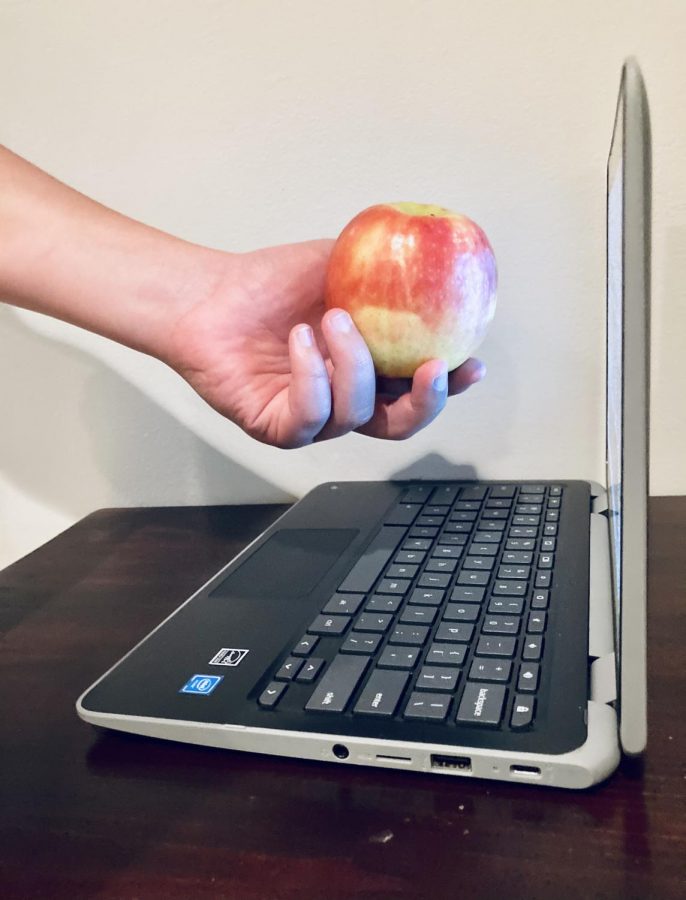How Students and Teachers Are Forming Relationships Virtually
Students have to make an extra effort to connect with teachers through online barriers.
September 18, 2020
Most would say it’s an understatement to say that online school has been a major transition for everyone.
The content of the classes themselves has needed to shift to keep up with the times. Many classes needed to move around schedules, and some classes needed to remodel the course entirely.
One of the biggest obstacles has been developing the relationship between teachers and students that forms more naturally in-person.
Biology teacher James Lotarski said, “I think the virtual environment is an obstacle for people to make connections.” Many teachers are trying to make extra efforts to make connections, but they can’t be one-sided.
This is especially hard when some students don’t make the effort to connect. To combat this, teachers try to keep a “camera on” rule.
“If students don’t have the camera on, then I really don’t know what’s going on,” said theater and English teacher Ryan Colton.
With learning taking place at home, there can be a number of reasons kids aren’t fully logged on.
Colton continues, “things could be happening in the home and they just can’t share themselves at that moment.” These distractions can not only make it hard for teachers to connect, but it can also be hard for students to focus.
“Your home isn’t exactly a learning environment, there’s distractions everywhere,” said Frances Encisa, senior. These can come in the form of family members, pets, or most commonly, cell phones.
Participation has also changed, whether it is from hesitance to unmute or from the distractions.
“I think many students are still in that mode of ‘I just gotta get up and make sure I’m logged in,’ but past that point, they aren’t mentally invested,” said Lotarski.
Before, students needed to get dressed and get on the bus before going to school. They had time to shift into a school mindset. Now, however, students can roll out of bed, or even stay in bed, blurring the lines between school and home.
Colton said, “I really feel like I’m working extra hard to really get that engagement.” Teachers are making much more of an effort to get kids to talk. Many are using a variety of tools and tricks to get kids to participate in class.
One such trick is the use of online surveys. At the beginning of the school year, many teachers had students fill out an online form asking about many questions. The most common questions were about student personalities, learning styles, and teaching preferences.
“Students were very upfront and very honest and I feel like they told me things they normally wouldn’t tell me in a live setting in front of everybody,” said Colton. The beginning of the year survey was a common feature in many classrooms, but teachers are thinking of integrating it into more day-to-day activities.
Small check-in surveys are an easy way for teachers to see how students are doing, even if they don’t want to talk openly in class. “I’ll probably continue to do surveys for students, but not as long-winded as the one that we did, just quick check-ins,” said Colton.
Another very widely used feature has been the chat window, a section where students can type comments instead of turning on their microphones.
Art teacher Laurie Wennemar said, “Some students I’ve noticed are more comfortable or writing their responses in the chat verses speaking in front of the whole class.” The chat feature is a very common tool used by teachers to encourage shyer students, or to get many responses at once.
Another difficulty to face online is that it’s difficult to have multiple students talking at the same time.
A way that teachers try to get around this hurdle is by splitting the class into break-out groups, mimicking the in-class structure of table groups. However, it has not been very easy sailing.
Social studies teacher Janelle VanDeSampel said, “I’ve used the Google Meet workaround, and it’s not totally smooth.” For Google Meets, an extension needs to be downloaded, and even then, it doesn’t always function.
The groups have also been met with mixed reactions from students, with some speaking more, and others finding it uncomfortable.
Stella Mollsen, senior, said, “People don’t really talk that much, so it makes things a little awkward.” Breakout rooms can also force students into the spotlight even if they don’t feel ready.
With many students already under a lot of stress from the changes, being forced to participate or being called on unexpectedly can create even more anxiety.
Breakout rooms also highlight a key shortcoming with the online structure, the lack of student to student relationships. With classes being online, everyone is focused on the teacher, and less interaction happens between students.
Encisa said, “There’s almost no point in being in the same class as your friends.” Those quick chats before class with peers don’t happen anymore, even when sharing classes with friends.
When in class, there is no chance for side conversations, and it is difficult for teachers to make group projects. Comfort level among peers also impacts participation. If students are fine talking to the teacher but not around other teens, they won’t be as willing to share.
Some other tools used by teachers have been one-on-one interviews, Edpuzzles, asking get-to-know-you questions for attendance, reflective prompts, assigning roles in class, and slideshows to share work.
This change online has also brought some unexpected benefits. Many teachers are learning about new resources that they are going to continue to use once school returns to in-person learning.
Book-keeping for students and teachers alike seems to be easier. Rather than carrying around overflowing folders, students have all their materials on one website or google folder. Teachers can have automatic grading for multiple-choice tests online.
“Instead of me collecting stacks of paper and my office being piled up with papers, having everything in my own place has been kind of nice,” said Lotarski.
Teachers can also monitor student progress more easily. With documents being online, teachers can check throughout the day and contact students individually if they see that they need some help.
Another major adjustment, whether positive or negative, has been the independence of students. With online classes, teachers often release students for work time and expect them to come back.
“When students have that ownership and that control, they have more buy-in and that’s a good thing for them,” said VanDeSampel. Especially with upperclassmen, teachers feel that student control prepares them for college.
This sudden change online has also left students more appreciative of the effort teachers to make. Encisa said, “I’ve gained a whole new level of respect for teachers.”
It is hard enough for the kids, but even more so for the teachers trying to plan and organize and realize the lessons.
Not only have teachers needed to change whole yearly schedules and find new online methods, but they also needed to adjust to block scheduling. The change from 47 to 75-minute classes greatly changed how teachers needed to plan for the day.
One aspect of school that simply cannot be translated through a computer screen is the energy and environment.
“Students are full of questions. They’re full of laughter. They’re full of stress, all of the stuff. When they’re in the building, you feel that, and you work with it, and you build off it,” said VanDeSampel.



